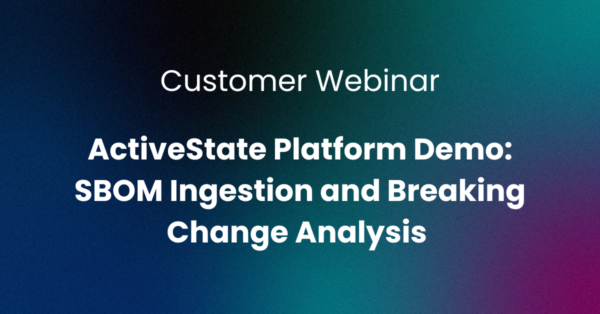I’ve been talking a lot about Perl this summer but wanted to tackle one more topic that is very important to me and ActiveState: the Perl Community. Every since I joined ActiveState last year, I have been exposed to the Perl community in a way I never was before. I’ve been even more impressed with the passion and commitment of this diverse community and thought I’d share a few thoughts on why I think that the Perl community is so great–and why it’s been integral to keep Perl relevant.
- A Welcoming Group
In the past few years, there has been a noticeable resurgence in new Perl users. Not only did Perl re-enter the TIOBE Top 10 rankings but we noticed this phenomenon with our own user base. In our recent Perl survey, almost half of respondents said that they’d been using Perl for five years or less. A major reason for this, other than the fact that Perl is useful, fast, and powerful, is that the Perl community is so welcoming and open to new adopters. This was something that I noticed when I attended the YAPC conference a few months ago and something I’ve noticed over my decade plus experience with Perl. There is always a willingness to help, teach, and involve new users which is not always the case in other language communities.Jason McIntosh echoed this in the webinar we did. He observed that a lot of the best Perl programmers he knows are at least 10+ years younger than him. This influx of developers migrating towards Perl for new or legacy projects and the fact that many companies are starting new Perl projects (it’s not just about legacy!) is only possible because of the large, supportive, and helpful Perl community. - The Ecosystem/CPAN
The Perl ecosystem is the strongest I’ve seen for any language. Numerous times, I’ve looked for things in CPAN that I had no reasonable expectation would be there and it’s always had the answer. Plus it’s now at least five to ten times bigger than it was in the early 2000s. This is a remarkable feat.You might expect with the lengthy waits between releases from 2000 to 2010, that Perl would have begun to fade. But in reality, though there weren’t many new users coming to the language during that time, most Perl developers stuck with it, and the community kept evolving and developing. In 2010, the Perl community started producing yearly releases at a regular cadence which resulted in a large increase of Perl adoption. It wasn’t just the fact that there were regular releases, but there was a large catalogue of modules and features to assist developers. A language is only as strong as what it lets you do and Perl/CPAN lets you to do quite a bit! The Perl community has excelled at being there to help and teach people, and also at maintaining this robust ecosystem of the language itself. The entire universe of language extensions and modules and applications that you can find on CPAN speaks to the tenacity and robustness of the Perl community. - Innovation
One of the major reasons for Perl’s continued growth and relevance is the community’s willingness to not only accept new ideas, but to adopt them. Since regular releases began again in 2010, there have been significant feature enhancements drawn from Perl 6 and elsewhere. For example, the Moose language extension brings modernized OOP programming techniques to Perl, and lessons learned from the Node Package Manager project has had an impact on MetaCPAN.The Perl community avoided the trap of closing itself off from what the rest of world is doing. It’s always easier to stick with the status quo but, instead, the community chose to freely borrow and improve itself based on what other software developers are doing. Being open to new ideas and maintaining a willingness to evolve is a major reason why Perl is still very relevant today.
I think all of these factors are indicative of something that I like to call the Perl Renaissance. People are coming back to the language, bringing with them new ideas and a fresh way of looking at things. With this comes new features, new ways of doing things, and a resurgence in the demand for Perl. The community’s openness and willingness to embrace new ideas is what has kept Perl relevant all these years and will help to continue to grow the language in ways that we haven’t even thought of yet.
Title photo courtesy of Toa Heftiba on Unsplash.






